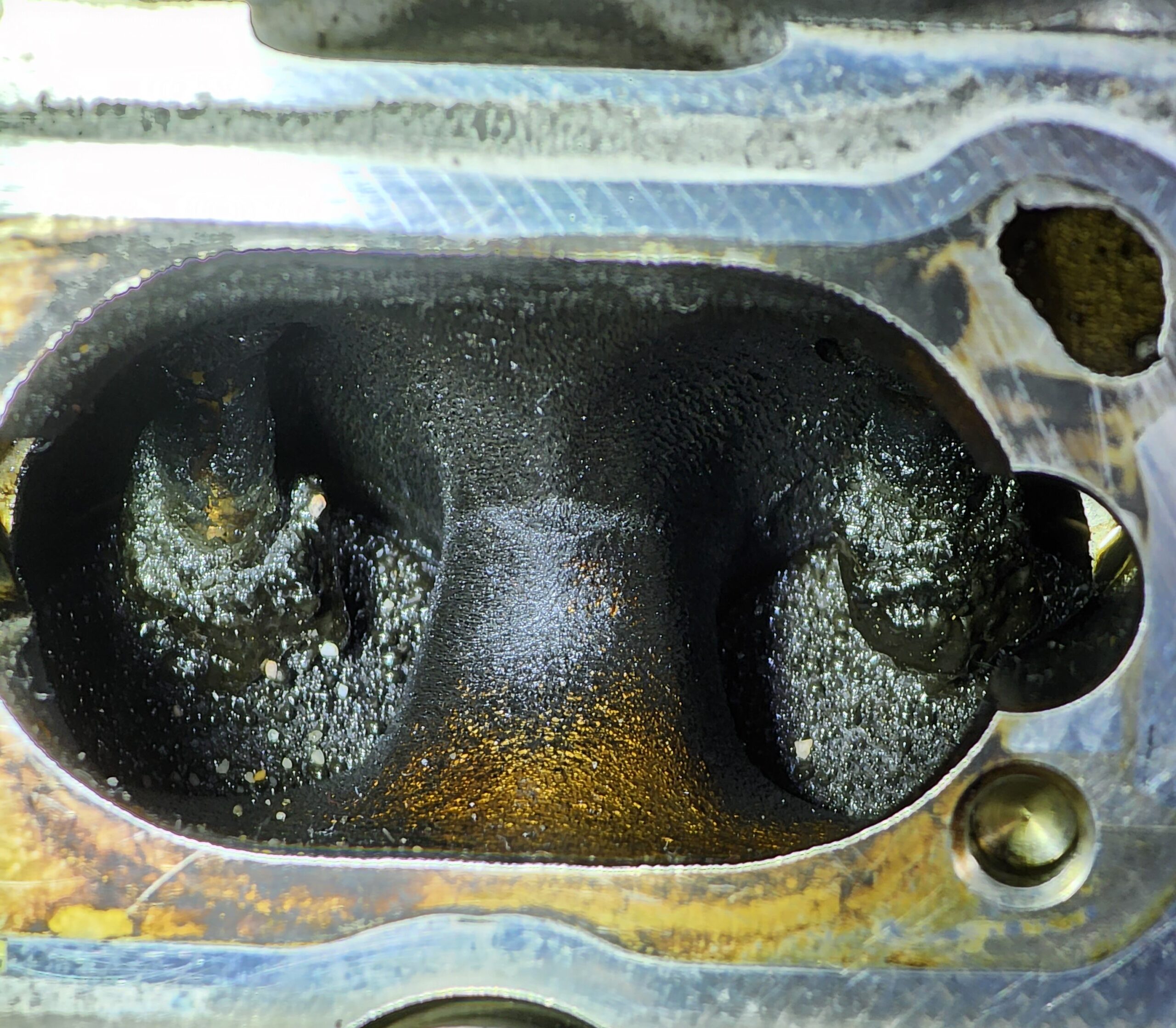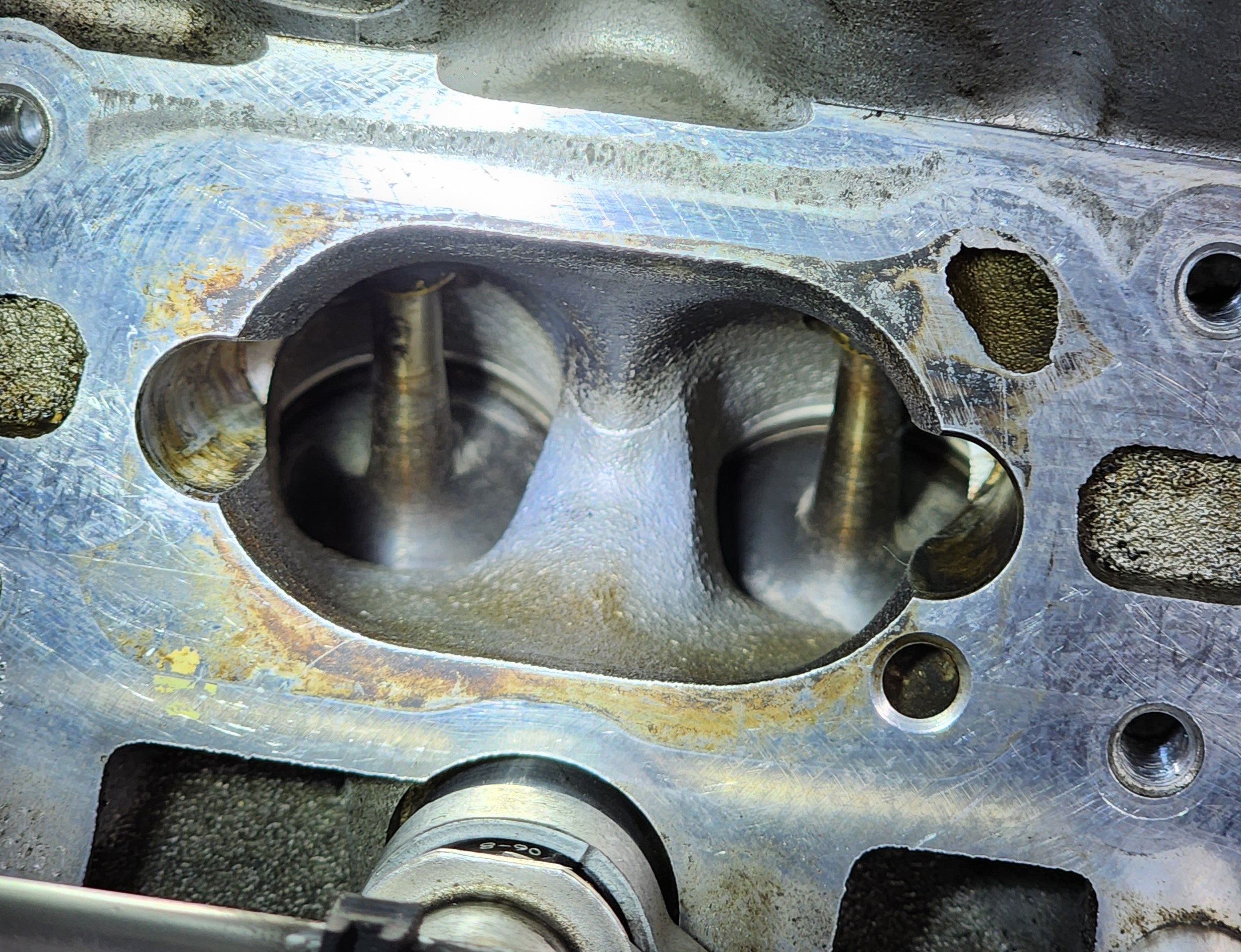Understanding the Problem of Carbon Buildup in Direct injected engines has revolutionized the automotive industry with improved performance and fuel efficiency.
Unlike traditional port fuel injection systems, direct injection engines have a vulnerability – carbon buildup on the intake valves. Carbon deposits gradually accumulate on the intake valves, hindering airflow and fuel atomization. This results in reduced engine performance, decreased fuel economy, and potential drivability issues. Audi and Volkswagen models, known for their direct injection engines, are particularly susceptible to this problem due to the design and configuration of their intake systems. Below is an example of heavy carbon buildup on the intake valves:

Introducing Walnut Blasting, also known as media blasting or carbon cleaning.
This is a highly effective method for removing carbon deposits from the intake valves. This technique involves blasting finely ground walnut shells at high pressure onto the valve surfaces, dislodging and removing the stubborn carbon buildup. Specialized equipment, such as a blasting wand and a vacuum system, is used to perform the procedure safely and efficiently. The walnut shells are biodegradable and non-abrasive, making them an ideal media for this cleaning process.
The Importance of Regular Walnut Blasting is vital for maintaining the performance and longevity of direct injected engines, including those in Audi and Volkswagen vehicles.
By removing carbon deposits from the intake valves, walnut blasting restores proper airflow, fuel atomization, and combustion efficiency. This translates into improved throttle response, increased power output, and better fuel economy. Neglecting carbon buildup can lead to severe drivability issues, reduced engine power, and even long-term damage to the intake system and engine components. Below is an example of the results of Walnut Blasting of the intake valves:

The recommended service interval for this service varies depending on factors such as driving conditions, fuel quality, and maintenance history.
As a general guideline, it is advisable to perform walnut blasting every 30,000 to 60,000 miles, or every 3 to 5 years, to prevent significant carbon buildup. However, it’s important to consult your vehicle’s manufacturer guidelines and specific model recommendations. Our friends over at FCP Euro have an indepth writeup covering this topic here.


